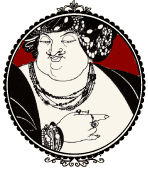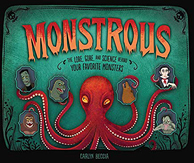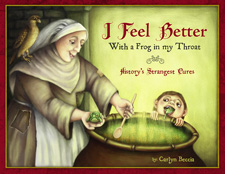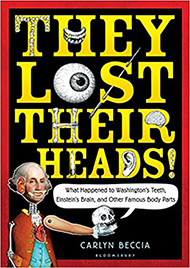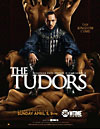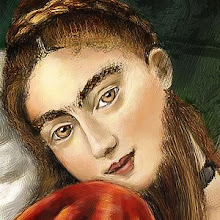
Thursday, October 30, 2008
Let Them Eat Hair Garnishes

Wednesday, October 29, 2008
Royal Ghost Tales
 This is the end to this terrifying Halloween month and the point where I feel obliged to take all the fun out of what could have been spooky tales. The following just might be the least scary ghost tales you have ever heard.
This is the end to this terrifying Halloween month and the point where I feel obliged to take all the fun out of what could have been spooky tales. The following just might be the least scary ghost tales you have ever heard.The Ghost of Anne Boleyn
The Scary:
Visit the Tower of London and you might spot a very famous ghost. Several eyewitnesses have reported the ghostly apparition of Henry VIII’s second wife clad in white roaming the Green Tower with her head in her hands.
And if Anne’s tower haunting is not spooky enough then take a trip over to Blickling Hall. Anne’s ghost has been spotted drawing up to the stately home in a coach pulled by four headless horses driven by a headless coachman.
The not-so-scary:
If Anne was to haunt the tower wouldn’t she have the dignity to put her head back on her shoulders? That hussy Katheryn Howard might prance around without a head….but not our lovely Anne. And I really can’t understand why Anne would choose to use a horse drawn coach considering that they didn’t exist in England at the time. If she was really going to pull up in an anachronistic vehicle…why not something a bit fancier, like a Porsche?
 The Ghost of Marie Antoinette
The Ghost of Marie AntoinetteThe Scary:
You don’t have to travel all the way to Paris to see Marie Antoinette’s ghost. In a house on the coast of Maine in North Edgecombe, a phantom appears decked out in a towering headdress and a satin dress. The ghost sightings have become so common that the house is called the “Marie Antoinette House”. According to legend, there was a plot to rescue Marie Antoinette in a ship called the Sally with the intention of taking her to Maine. But alas, the rescue attempt failed and Marie Antoinette was beheaded and never forgave the French. For this reason, Marie Antoinette’s ghost has chosen to haunt the coast of Maine. If you see this ghost, you must bow deeply while backing away. If you don’t follow this royal etiquette then the ghost will have a royal tantrum and will curse like a Maine truck driver.
The not-so-scary:
Marie Antoinette was well-known for eschewing royal protocol. She got her husband to abolish the custom of dining in public daily and thought it was downright silly for her ladies-in-waiting to serve her while kneeling. And swearing would never have happened. Marie Antoinette was so polite that she apologized for accidentally stepping on her executioner’s toe. But most importantly, if any self-respecting ghost was to arrive in Maine, they would stick around for maybe one winter and then head straight for Florida to never return again.
The Ghost of Mary Queen of Scots
 The Scary
The ScaryMary is believed to haunt at least 5 Scottish landmarks including Stirling, Craignethan, Borthwick and Lockleven Castle and also the Palace of the Holyrood House. Wheeeeew! When it comes to castle haunting, Mary really gets around. And if that was not enough to keep Mary’s ghost busy you can also visit the ghost of a young boy believed to be her servant at Glamis Castle.
Legend has it that there is a blood stain on the floor of Holyrood House from when Mary’s secretary David Rizzio was butchered. People have tried to clean the blood stain but it keeps…reappearing.
The Not-So Scary
It’s ironic that Mary has chosen to haunt Scottish castles considering that she was confined in English castles for the majority of her life (19 years). Why not float over to Buckingham and try to scar the queen? She is at least the namesake of the women who sentenced her to death? And why not haunt some castles in France? She certainly spent the happiest years of her life in France. Those raucous Scotsmen seem to be very possessive of Mary. With all this talk about the Scottish government digging up the poor woman’s body and shipping it back to Scotland, they can at least be satisfied that they got her ghost.
And as far as the bloodstain goes - have they tried Pine-Sol? That stuff works wonders and smells like Christmas trees.
Sunday, October 26, 2008
Are YOU a witch?

With only a few days left to Halloween, can you be certain that you are not a witch? Take the quiz and find out.
Tuesday, October 21, 2008
Haunted History: Cats, Crones, Foul Air & Black Kings
 As Halloween approaches, I am seeming more and more of the ubiquitous inflated goblin or ghoul poking their balloon heads out from behind my neighbor’s bushes.1 And of course, because I love history, it has got me thinking about what people feared in the past. What were the boogie men of 16th century Europe? Ghosts may have roamed the graveyards, but what other scary creatures would frighten the kiddies out of their candy corn. Here is my short list of the scariest things of the 16th century:
As Halloween approaches, I am seeming more and more of the ubiquitous inflated goblin or ghoul poking their balloon heads out from behind my neighbor’s bushes.1 And of course, because I love history, it has got me thinking about what people feared in the past. What were the boogie men of 16th century Europe? Ghosts may have roamed the graveyards, but what other scary creatures would frighten the kiddies out of their candy corn. Here is my short list of the scariest things of the 16th century: Cats
CatsI had blogged in the past about how dogs ruled royal palaces. Well, while dogs were whooping it up in the 16th century, cats were trying to escape kitty persecution. Unlike dogs, cats were seen as weak and feminine. Scariest of all, they were linked with witchcraft because they were believed to be really witches in disguise called familiars. Cats were so demonized by the Catholic Church that they were even ritually slaughtered on All Saints Day. (The Pope endorsed the past time with religious zeal) And it wasn’t just the Catholics that persecuted cats. At the succession of the Protestant Queen Elizabeth I, an effigy of the Pope made out of a wicker basket was set on fire. Inside the basket were helpless cats. This especially horrid display of kitty cruelty was meant to signify the releasing of demons. It really only released a dead cat smell.
 Old people
Old peopleI love the seniors but I have to tell you...old people of the 16th century were downright creepy (especially old women). Little medical care, rampant disease, sketchy hygiene, and death in child birth all added up to an average life span of 35 years in London. Yikes. I would be over the hill by now. But some lucky folks did manage to buck the system and live into their 70s and 80s. It was these wizened octogenarians that scared the daylights out of the Elizabethan kids. We can imagine that someone who made it to 70 might have looked like they were about 100. Some historians have even argued that aged midwives became an easy target for the witch hunts because they not only used herbs and delivered babies, but also typically lived on the outskirts of society with little male protection. Everyone basically thought these ancient midwives must be sippin the witch’s brew and bathing in baby’s blood to live that long. (Most of the witches put to death were over 50) It was this fear of old people (otherwise known as Gerontophobia) that led to many an innocent senior getting hung or burned for witchcraft.
 Philip II
Philip IIThere is a reason why Philip always dressed in black and never smiled in his portraits. The King of Spain was one scary bad ass. Under the regency of Catherine de Medici and the later rule of her sons, France spent most of the 16th century tip toeing around Philip trying not to piss him off and get embroiled in a war they couldn’t win. Elizabeth I had to continuously avoid plots from Spanish assassins trying to off her. And for the rest of the world (especially the Netherlands), there was good reason to fear Philip. Spain was a Catholic superpower whose military might was continuously fed by the pilfered gold and silver from the Americas.2 You would think all this gold might put a smile on Philip’s face, but he was too busy chasing the Protestants out of the country to enjoy his booty. It was rumored that the only time Philip smiled was after he heard of the slaughter of Protestant men, women, and children at the St. Bartholomew’s Day massacre. Now there’s a guy that you might not want to take a candied apple from.
 Foul smells
Foul smellsAs a young boy Henry II of France was held captive in a Spanish prison with his brother. When he was finally released, the constable of Castile gave him two white horses as an apology for his imprisonment. In response to this token of goodwill, Henry promptly turned around and unloaded the only ammunition that he had on his young frame…he farted in the constable’s face. Innocent childhood prank? Hardly. Smells were deadly. The ruling medical theory from the 16th to the 19th century was that bad air carried diseases. For this reason, women wore pomanders filled with sweet scents close to their body. And to avoid plague infections, doctors wore long beaks filled with sweet smelling incense to mask the smell of death and disease. Looking like a parrot may have saved their noses, but hardly their immune systems.
(1)I personally find inflatable Halloween props much scarier then anything on this list.
(2) Elizabeth’s Pirates stole a good chunk of it.
Sunday, October 12, 2008
Death Masks
 Last week's post briefly covered immortalizing the dead through death masks. A death mask is a plaster, wax or metal casting of the deceased’s face. With the Renaissance’s art movement toward naturalism, death masks were taken to create an exact likeness from which subsequent portraits could be made. But unlike portraiture, they were often a far more accurate representation of the deceased.
Last week's post briefly covered immortalizing the dead through death masks. A death mask is a plaster, wax or metal casting of the deceased’s face. With the Renaissance’s art movement toward naturalism, death masks were taken to create an exact likeness from which subsequent portraits could be made. But unlike portraiture, they were often a far more accurate representation of the deceased. During the 16th century, funeral effigies of dead kings and queens were carved from oak or wax and placed on top of coffins. The image to the right is a wooden effigy of Henry VII covered with linen and stucco. Traces of paint still exist on the face and a wig once sat on the head. You will notice that the eyes are open, not closed. Although difficult to prove, the obvious realism of Henry’s effigy may have been achieved with the help of a death mask.
During the 16th century, funeral effigies of dead kings and queens were carved from oak or wax and placed on top of coffins. The image to the right is a wooden effigy of Henry VII covered with linen and stucco. Traces of paint still exist on the face and a wig once sat on the head. You will notice that the eyes are open, not closed. Although difficult to prove, the obvious realism of Henry’s effigy may have been achieved with the help of a death mask.
 Sometimes little embellishments like paint, eyelashes and hair were added to create a more idealistic representation as can be seen in Mary Queen of Scots’ death mask shown here.*
Sometimes little embellishments like paint, eyelashes and hair were added to create a more idealistic representation as can be seen in Mary Queen of Scots’ death mask shown here.*
As works of art themselves, death masks in the 16th -17th century had little value. They were viewed simply as a tool to assist in portraiture. And although unquestionably a macabre practice, the death mask was not designed to capture the subject in death, but to portray how the subject looked during life. All of that changed when heads started to roll during the French Revolution. The Revolution's hatred was never satiated by the slice of the guillotine. The mob wanted an effigy to quench their thirst for blood. And that is when Marie Grosholtz , otherwise known as Marie Tussaud, found herself employed unwillingly by the angry Parisians of the Revolution. Marie made wax death mask of many famous victims of the revolution including Marie Antoinette, Louis XVI, Madame Elizabeth, Princess Lamballe, Robespierre, Danton, and Marat to name just a few.
All of that changed when heads started to roll during the French Revolution. The Revolution's hatred was never satiated by the slice of the guillotine. The mob wanted an effigy to quench their thirst for blood. And that is when Marie Grosholtz , otherwise known as Marie Tussaud, found herself employed unwillingly by the angry Parisians of the Revolution. Marie made wax death mask of many famous victims of the revolution including Marie Antoinette, Louis XVI, Madame Elizabeth, Princess Lamballe, Robespierre, Danton, and Marat to name just a few. To the right is the death mask taken of Marie Antoinette. Marie Tussaud did not attend Marie Antoinette’s execution, but she did see the queen go by in her tumbril on the way to the scaffold.
To the right is the death mask taken of Marie Antoinette. Marie Tussaud did not attend Marie Antoinette’s execution, but she did see the queen go by in her tumbril on the way to the scaffold.
*It is doubtful that Mary's death mask was created at the time of her death.
With Halloween around the corner, here is how to make your own death mask using the 16th century techniques:
Materials:
Dead or Live subject
Plaster
String
Paint
Modeling clay
Steps:
1. Paint the hair over with a thick solution of modeling clay or oil so that the plaster will not adhere to it.
2. Ladle thin plaster over the face.
3. Place a thread from the bottom of the chin to the top of the forehead.
4. Ladle a thicker plaster over the face.
5. Before the second layer dries, remove the thread to divide the mask into two halves.
6. After the mold is hard, carefully remove it from the face. This step is hard. Be careful.
7. Fit the two halves together.
8. Clean the inside of the plaster mask and refill it with modeling clay and plaster to make the final model.
9. Add hair, eyelashes...glitter. Be creative. This is YOUR death mask.
Stay tuned for a future post on Marie Tussaud and her wax models.
Sources:
Benkard, Ernst. Kolbe, Georg. Green, M. Margaret. Undying Faces: A Collection of Death Masks. Whitefish, MT: Kessinger Publishing, 2003
Monday, October 6, 2008
Creepy Rumor of the Month
 All posts this month will be of an undeniably diabolical nature. Let’s start with a creepy art rumor featuring James Scott, the Duke of Monmouth.
All posts this month will be of an undeniably diabolical nature. Let’s start with a creepy art rumor featuring James Scott, the Duke of Monmouth. Monmouth was the illegitimate son of Charles II and his mistress, Lucy Walter. One thing that Monmouth seemed to inherit from the Merry Monarch was his affability and vivacity. The public adored Monmouth from the start. Pepys writes of him:
Monmouth was the illegitimate son of Charles II and his mistress, Lucy Walter. One thing that Monmouth seemed to inherit from the Merry Monarch was his affability and vivacity. The public adored Monmouth from the start. Pepys writes of him:The Duke of Monmouth is the most skittish leaping gallant that ever I saw, always in action, vaulting or leaping, or clambering. 1
By all accounts, Charles adored this pretty youth too and recognized Monmouth as his son, but not his heir. Monmouth became his father’s constant companion and the two “leaped” and “clambered” their way through hunts and royal progresses. In 1643, Charles made Monmouth a duke at the age of 14. Monmouth served in the English fleet two years later and his courage and valor were marked by Duke of York, the Lord High Admiral of the Fleet. Monmouth had everything going for him – military honors, good looks, effortless charm and most importantly, the love of a king. This love afforded Monmouth a glittering life and all the spoils of a royal birth… but not the prestige of a crown.
Perhaps it was this love that also emboldened Monmouth to feel he had every right to the crown after his father's death. He certainly had popular public support and the right religion. Thus, Monmouth might have had a far less ignominious end to his playboy life if the silly twit had not decided to head a protestant rebellion to seize the throne from his uncle, James II. The sometimes tyrannical James just couldn’t have his brother’s bastard children running around causing religious unrest. So Monmouth found himself on the chopping block on July 15th, 1685 with executioner John Ketch’s shiny ax above his head. It took 7 tries to get the job done*
 It might have been by stroke 7 that everyone realized they had forgotten something. No one had a portrait of Monmouth. As an artist, I can tell you it is really difficult to capture someone’s likeness from memory. So what do you do when you don’t have your live model? You use a dead one! Rumor has it that the court surgeon got out his sewing kit and stitched poor Monmouth's hacked, bloody head right back on the body so he could pose for his “official” portrait. At least this is the story that the Yeoman of the Guards will tell you on the Tower of London’s official tour.
It might have been by stroke 7 that everyone realized they had forgotten something. No one had a portrait of Monmouth. As an artist, I can tell you it is really difficult to capture someone’s likeness from memory. So what do you do when you don’t have your live model? You use a dead one! Rumor has it that the court surgeon got out his sewing kit and stitched poor Monmouth's hacked, bloody head right back on the body so he could pose for his “official” portrait. At least this is the story that the Yeoman of the Guards will tell you on the Tower of London’s official tour.Should we believe them? The Yeoman live and breathe English history. They are wearing the funny hats, marked with the royal crest and all look like credible witnesses of the past. So it must be true. Right? Let’s first trace this rumor.
 The unsettling painting shown here is believed to be the origin of this rumor. Clearly you can see the subject is having a bad day. He might even be missing a head. The painting’s date is unknown. The artist is unknown and even the subject is labeled as an “unknown man.” Stylistically, the painting’s somber, dark shadows mimic the same techniques of Sir Peter Lely, Principal Painter to Charles II.
The unsettling painting shown here is believed to be the origin of this rumor. Clearly you can see the subject is having a bad day. He might even be missing a head. The painting’s date is unknown. The artist is unknown and even the subject is labeled as an “unknown man.” Stylistically, the painting’s somber, dark shadows mimic the same techniques of Sir Peter Lely, Principal Painter to Charles II.Although this death portrait is less than flattering, it is important to keep in mind that Monmouth was a real stud. Male beauty was even more revered then female beauty in the 17th century and anyone possessing such godlike features would have had artists knocking at their door. And artists did line up to paint Monmouth. We have several accounts of Monmouth sitting for some of the most popular artists of his day.
 Sir Peter Lely painted Monmouth on at least two occasions. One painting depicts James at the sweet age of 15 accompanied by a lamb, but the original is lost. An engraving reproduced by Blooteling can be seen to the right here. Two other engravings taken from Lely paintings can be found at the National Portrait Gallery depicting an older Monmouth. Both engravings portray a young, handsome man in full classical regalia.
Sir Peter Lely painted Monmouth on at least two occasions. One painting depicts James at the sweet age of 15 accompanied by a lamb, but the original is lost. An engraving reproduced by Blooteling can be seen to the right here. Two other engravings taken from Lely paintings can be found at the National Portrait Gallery depicting an older Monmouth. Both engravings portray a young, handsome man in full classical regalia.Monmouth also sat for the German artist Sir Godfrey Kneller when Monmouth invited him to England in 1674. The painting is dated in 1678…seven years before his death.
According to the NPG records today, Monmouth is associated with at least 35 portraits. All these paintings and not one was done during his life? Highly unlikely. I suspect instead that most of Monmouth’s portraits were destroyed after his death with only copies remaining.
Another reason why I don’t believe this rumor is because I don’t think Charles would really forget to take an official likeness to a son he adored. Remember that Charles had no legitimate heirs. Monmouth was the closest thing to a son that Charles would ever get. All that time father/son bonding over hunting and chasing ladies and Charles never stopped to say, “hey my painter is in town. Why don’t you sit for him.”
 And if the court really wanted to remember Monmouth at the time of his death then they would have at least had a death mask made after his execution. A death mask is a plaster, wax or metal casting of the deceased’s face. The molds were used to create an exact likeness of the deceased and could in turn be used to create more molds so everyone could keep an effigy of Monmouth on their mantle. Artists also often used these death masks to create subsequent portraits. An example of a famous, English death mask used in portraiture is of Oliver Cromwell taken just 7 years before Monmouth’s execution (shown here).
And if the court really wanted to remember Monmouth at the time of his death then they would have at least had a death mask made after his execution. A death mask is a plaster, wax or metal casting of the deceased’s face. The molds were used to create an exact likeness of the deceased and could in turn be used to create more molds so everyone could keep an effigy of Monmouth on their mantle. Artists also often used these death masks to create subsequent portraits. An example of a famous, English death mask used in portraiture is of Oliver Cromwell taken just 7 years before Monmouth’s execution (shown here).Death masks needed to be completed in the first 48 hours after the person’s death or things got a little hairy. When the body decomposes the features start to sag making it difficult for the molding to get a true likeness. So it is possible that during all the ruckus, everyone forgot to get Monmouth’s death mask done in the allotted time. It’s also possible that James did not want to revere the image of a man who one could argue died as a martyr for the Protestant faith.
But why would the Yeoman perpetuate such a ridiculous rumor when there are clearly portraits of Monmouth portraying his likeness before his death and the customs of the time contradict such forgetful actions? History is fascinating enough without these embellishments. I listened to the same Yeoman who told the Monmouth tale also tell a bored 8 year old in the front row that Anne Boleyn had six fingers. He said we knew this for a scientific fact because when her body was dug up they found an… extra digit. This story certainly got the boy’s attention and I hate to be the party wrecker, but this is simply not true. Anne’s body was exhumed in 1877 and she had only 5 lovely fingers.
Now I have nothing against the Yeoman, but if you had to stand around in a tower watching the same darn crows that never leave and telling the same stories over and over again…wouldn’t you start to play with the facts too? With so many tourists coming through those gates I can imagine how this rumor could get legs.
Let’s put an end to it here and let Monmouth and his decapitated head rest in peace.
Stay tuned for more scary posts this month and my artsy critique of the best and the worst death masks throughout history.
* No one really knows what was Ketch’s problem but let’s just say he might have picked the wrong profession.
Sources and Notes:
1: Pepys (p. 329)
Fea, Allan. King Monmouth: Being a History of the Career of James Scott "The Protestant Duke" 1649-1685, J. Lane, 1902.
Maud Reid Nepean, Evelyn. On the Left of a Throne: A Personal Study of James Duke of Monmouth, J. Lane, 1940.
Pepys, Samuel. The Diary of Samuel Pepys, New York, NY: Macmillan, 1905 - can be accessed online in Google Books.

